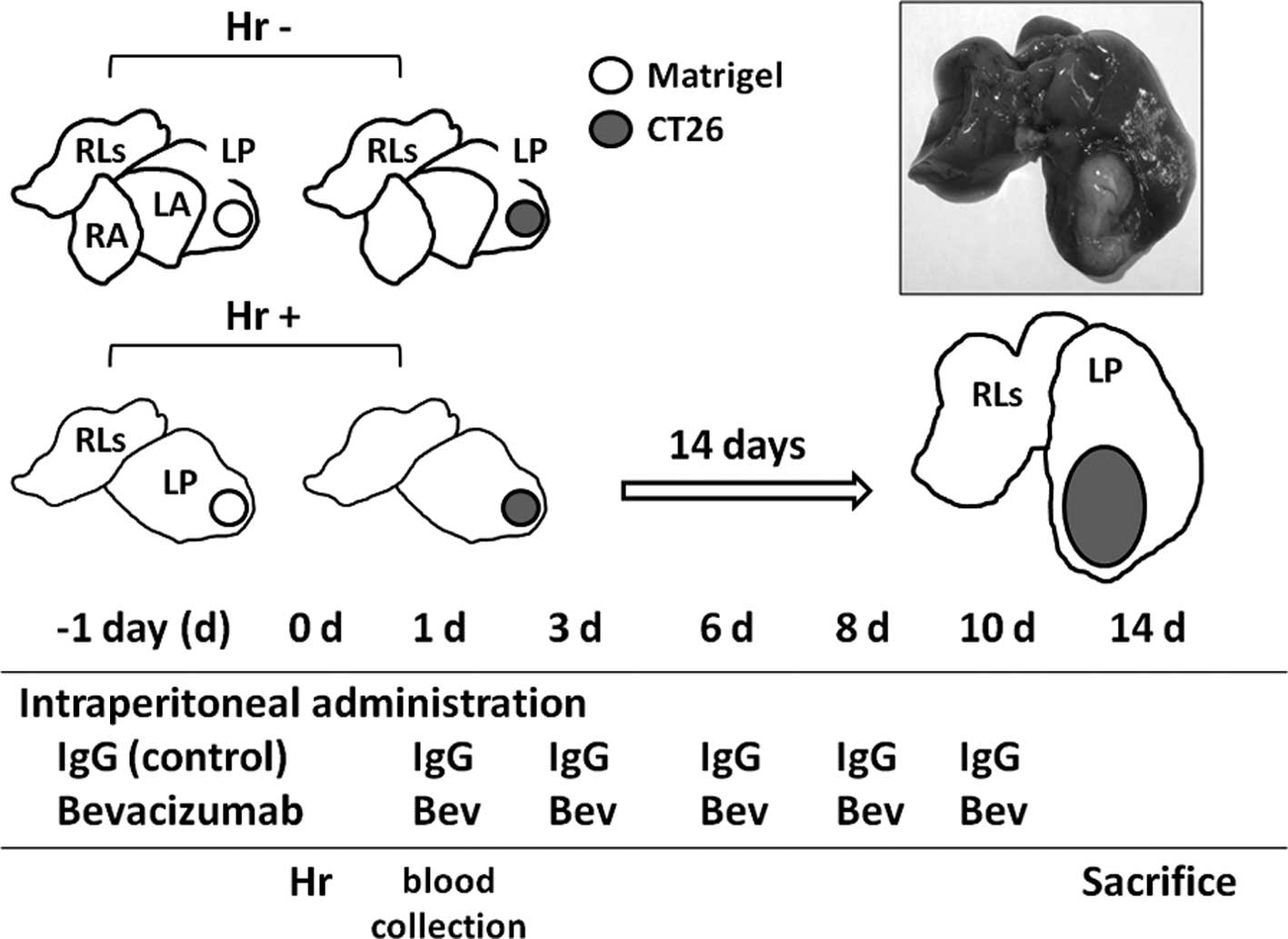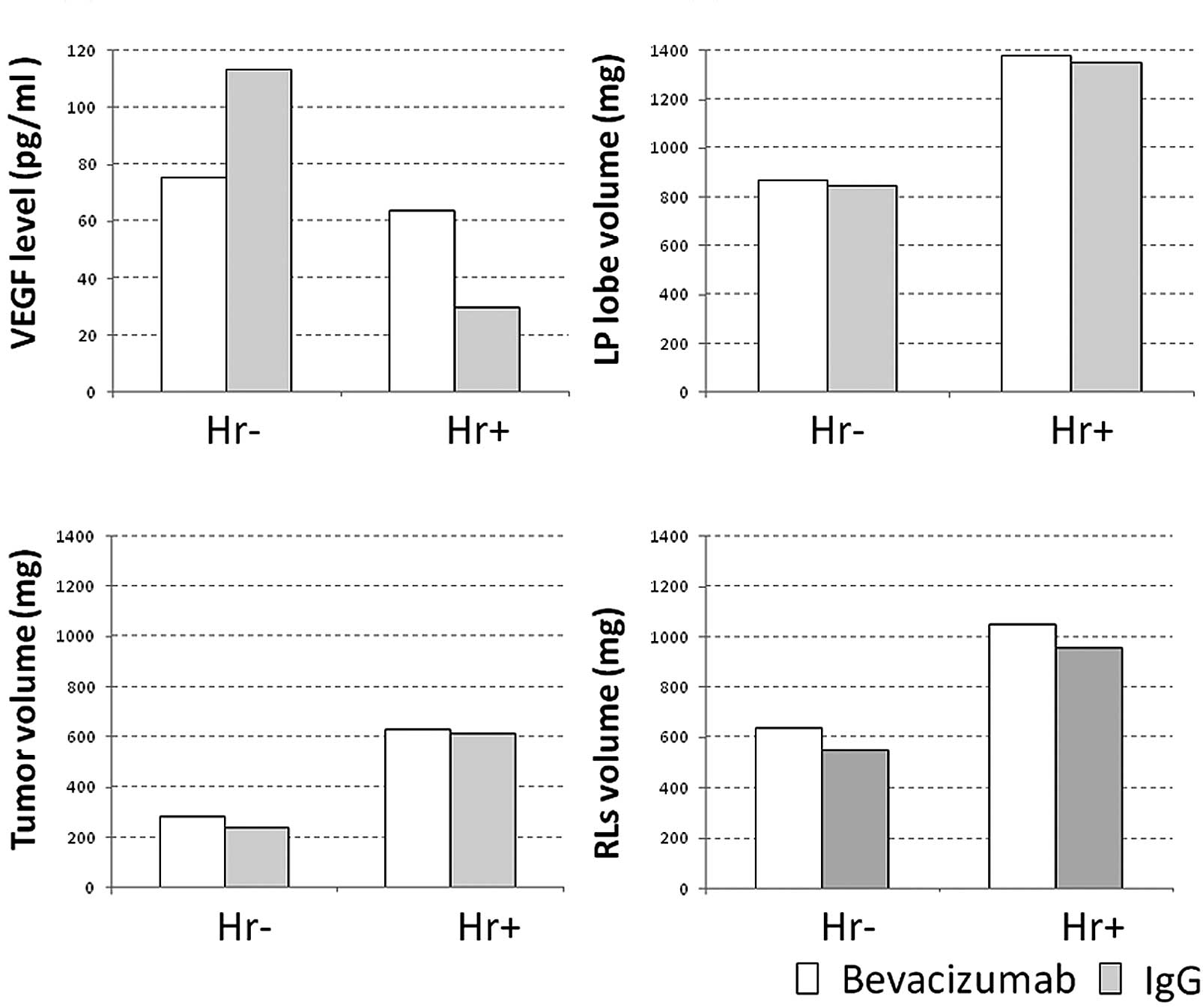
Administration of anti-vascular endothelial growth factor antibody following hepatectomy does not inhibit remnant liver regeneration or growth of remnant metastases
- Authors:
- Kazuhiko Kasuya
- Minako Suzuki
- Yuichi Nagakawa
- Yoshiaki Suzuki
- Satoru Kikuchi
- Bunso Kyo
- Takaaki Matsudo
- Takao Itoi
- Akihiko Tsuchida
- Tatsuya Aoki
View Affiliations
Affiliations: Department of Digestive Surgery, Tokyo Medical University, Tokyo, Japan, Department of Internal Medicine, Tokyo Medical University, Tokyo, Japan
- Published online on: December 6, 2011 https://doi.org/10.3892/etm.2011.409
-
Pages:
347-350
Metrics: Total
Views: 0 (Spandidos Publications: | PMC Statistics: )
Metrics: Total PDF Downloads: 0 (Spandidos Publications: | PMC Statistics: )
This article is mentioned in:
Abstract
In addition to the use of chemotherapeutic agents for the prevention of multiple liver metastases from colorectal cancer, the anti-vascular endothelial growth factor (VEGF) antibody, bevacizumab, is often used, and its effectiveness has been established. By contrast, it has been reported that the use of bevacizumab prior to or following surgery delays wound healing or liver regeneration. In this study, we investigated whether the administration of bevacizumab following hepatectomy inhibits remnant liver regeneration or the growth of remnant metastases. Mice were partially hepatectomized (31% of the liver was removed), transplanted with the murine colorectal cancer cell line, CT26, in the remnant lobe, and intraperitoneally injected with bevacizumab (4 mg/kg) for a total of 6 times. Serum VEGF levels were measured on day 1 following surgery, and each lobe of the liver was weighed on day 14. Serum VEGF levels in non-hepatectomized, tumor-bearing mice exceeded those in their non-tumor-bearing counterparts; however, the administration of bevacizumab did not reduce the serum VEGF levels. The volume of the liver lobe of the hepatectomized, CT26‑transplanted and non-CT26-transplanted mice was 1,349.6 and 735.5 mg, respectively, indicating rapid growth of the CT26 transplant (p=0.023). The volume of the CT26-transplanted lobe of the bevacizumab-administered mice was 1,379.0 mg, which was not significantly different from that (1,349.6 mg) of the non-bevacizumab-administered mice. The volume of the remnant lobe of the bevacizumab-administered mice was 1,051.0 mg, which did not significantly differ from that (957.3 mg) of the non-bevacizumab-administered mice. The administration of bevacizumab following hepatectomy did not delay remnant liver regeneration, and did not suppress the growth of metastases in the remnant lobes or remnant liver regeneration.
View References
|
1.
|
R AdamV DelvartG PascalRescue surgery for
unresectable colorectal liver metastases downstaged by
chemotherapy: a model to predict long-term survivalAnn
Surg240644657200415383792
|
|
2.
|
R AdamR MillerM PitomboDA WichertsRJ De
HaasG BitsakouT AloiaTwo-stage hepatectomy approach for initially
unresectable colorectal hepatic metastasesSurg Oncol Clin N
Am16525536200710.1016/j.soc.2007.04.01617606192
|
|
3.
|
T FukuuraC MikiT InoueK MatsumotoH
SuzukiSerum hepatocyte growth factor as an index of disease status
of patients with colorectal carcinomaBr J
Cancer78454459199810.1038/bjc.1998.5149716026
|
|
4.
|
SS YoonSH KimM GonenProfile of plasma
angiogenic factors before and after hepatectomy for colorectal
cancer liver metastasesAnn Surg
Oncol13353362200610.1245/ASO.2006.03.06016474912
|
|
5.
|
G MenthaS TerrazP MorelDangerous halo
after neoadjuvant chemotherapy and two-step hepatectomy for
colorectal liver metastasesBr J
Surg9695103200910.1002/bjs.643619109800
|
|
6.
|
J FolkmanY ShingAngiogenesisJ Biol
Chem26710931109341992
|
|
7.
|
AK GreeneM PuderPartial hepatectomy in the
mouse: technique and perioperative managementJ Invest
Surg1699102200310.1080/0894193039019442412746193
|
|
8.
|
K MeredithD HaemmerichC QiD MahviHepatic
resection but not radiofrequency ablation results in tumor growth
and increased growth factor expressionAnn
Surg245771776200710.1097/01.sla.0000261319.51744.5917457170
|
|
9.
|
E TaniguchiS SakisakaK MatsuoK TanikawaM
SataExpression and role of vascular endothelial growth factor in
liver regeneration after partial hepatectomy in ratsJ Histochem
Cytochem49121130200110.1177/00221554010490011211118484
|
|
10.
|
C YamamotoS YagiT HoriT IidaK TaniguchiS
IsajiS UemotoSignificance of portal venous VEGF during liver
regeneration after hepatectomyJ Surg
Res1593743201010.1016/j.jss.2008.11.00719394640
|
|
11.
|
SR AlbertsWL HorvathWC
SternfeldOxaliplatin, fluorouracil, and leucovorin for patients
with unresectable liver-only metastases from colorectal cancer: a
North Central Cancer Treatment Group phase II studyJ Clin
Oncol2392439249200510.1200/JCO.2005.07.74016230673
|
|
12.
|
S BenoistA BrouquetC PennaComplete
response of colorectal liver metastases after chemotherapy: does it
mean cure?J Clin
Oncol2439393945200610.1200/JCO.2006.05.872716921046
|
|
13.
|
M BockhornM GoralskiD ProkofievVEGF is
important for early liver regeneration after partial hepatectomyJ
Surg Res138291299200710.1016/j.jss.2006.07.02717275844
|
|
14.
|
M BockhornS SchöllmannB OpitzVascular
endothelial growth factor does not improve liver regeneration and
survival after 90% subtotal liver resectionHepatol
Res373533592007
|












